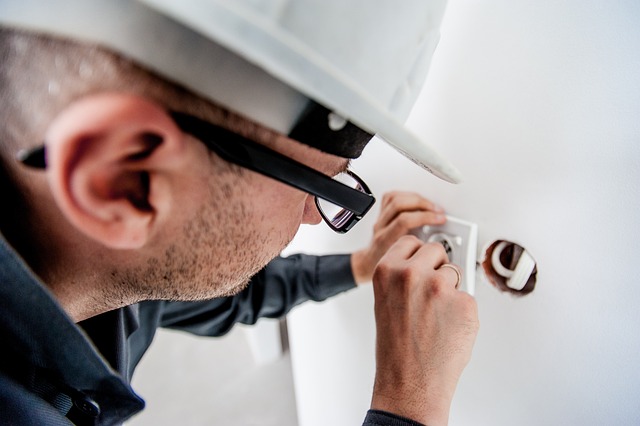Electrical professionals now favor modern circuit breakers over old fuses for their superior safety features and efficiency. Circuit breakers, easily reset after tripping, utilize electromagnetic coils to interrupt power upon overload or short circuit, eliminating the need for replacement. Electricians can swiftly replace outdated fuses with circuit breakers after ensuring power is turned off at the main panel, verifying no live current remains, and donning protective gear. Key specifications, including amperage ratings, must be matched during installation.
Are you tired of frequent power outages caused by outdated fuses? It’s time to upgrade! This article guides you through the process of replacing old fuses with modern circuit breakers, a task best handled by a professional electrician. Learn about the differences between these components and why circuit breakers offer superior protection. We provide a straightforward, step-by-step guide ensuring your home or business stays safely connected to reliable power. Discover the benefits and take control of your electrical safety today!
- Understanding Old Fuses and Modern Circuit Breakers
- Step-by-Step Guide for Replacing Fuses with Circuit Breakers by an Electrician
Understanding Old Fuses and Modern Circuit Breakers

Old fuses, once a standard safety feature in electrical systems, have largely been replaced by modern circuit breakers. Understanding the distinction between these two components is crucial for any electrician. Fuses are designed to protect circuits by blowing when excessive current flows through them, thereby interrupting power. However, they have limited reset capabilities and need to be replaced after tripping, which can be a time-consuming process.
In contrast, modern circuit breakers are more efficient and versatile. They use electromagnetic coils to detect and interrupt power flow in the event of an overload or short circuit. Unlike fuses, these devices can be easily reset by flipping a lever, allowing for quick restoration of power without replacement. This makes them a preferred choice among electricians due to their enhanced safety features and convenience.
Step-by-Step Guide for Replacing Fuses with Circuit Breakers by an Electrician

Replacing old fuses with modern circuit breakers is a straightforward process that an electrician can complete efficiently. Here’s a step-by-step guide to ensure the job is done right:
1. Safety First: Turn off the power at the main electrical panel before beginning work. Test with a voltage detector to confirm there’s no live current flowing. Safety gear, including gloves and protective eyewear, should be worn throughout the process.
2. Identify the Fuse: Locate the old fuse you wish to replace. Fuses are typically identified by their rating in amperes (A). Note this down for future reference as circuit breakers have similar ratings.
Upgrading from old fuses to modern circuit breakers is a smart move for any homeowner or electrician. This simple replacement can significantly enhance electrical safety and convenience, ensuring your home’s wiring stays secure and efficient. With this knowledge in hand, you’re now equipped to make informed decisions about your electrical system—and who better to assist than a qualified electrician?
